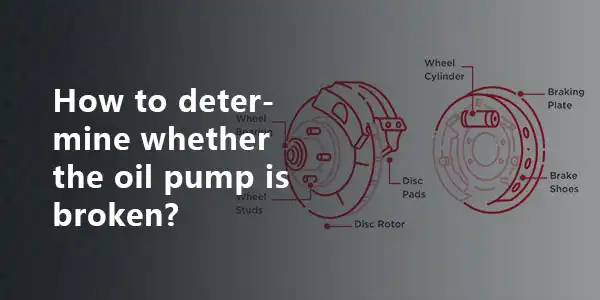How to Determine Whether The Oil Pump Is Broken?
Even the best things have a bad day, and the same goes for cars. Whether it is tens of thousands of cars or hundreds of thousands of high-end cars, occasionally there will be some problems. Some car owners do not understand the structure of the car, and they are at a loss when something unexpected happens. For example, many novice drivers ask, how to determine that the oil pump is broken. You can look at these aspects and easily find out the problem.
- The car feels powerless when accelerating, and there is a sense of frustration when refueling quickly. Under normal circumstances, the car will run smoothly, even if you step on the accelerator, there will be no stuttering. But once there is a problem with the oil pump of the car, the car will be abnormal while driving.
- When the vehicle is started, it needs to stay in the ignition position for a period of time to start normally. Under normal circumstances, this phenomenon will not happen, and this will only happen if the oil pump is damaged. When the car owner finds this problem, he can be sure that the car's oil pump is abnormal.
- There will be an icon of engine failure on the vehicle dashboard. Everyone knows that this icon will not appear under normal car conditions, so once the icon appears, it means that there is a problem with the internal parts of the car. Car owners can carry out investigations based on this phenomenon, and only when problems are found can they be repaired in time.
Oil pump failure analysis and troubleshooting
Precautions:
- The cooling water must be turned on to cool down the oil when starting up.
- The oil port of the spare hydraulic parts should be sealed, and the newly replaced pump should be filled with oil to prevent corrosion and non-lubricated damage to the pump body.
- Pay attention to the cleanliness of the oil. When refueling, stop cutting coal and have a filter screen at the refueling port. If conditions permit, try to have an oil suction device.
- Regularly replace the suction and return oil filter element.
The reason why the hydraulic pump motor rotates and the hydraulic pump does not discharge oil is that the hydraulic pump is reversed. Oil filter is clogged.
The connection between the hydraulic pump and the motor is damaged
Handle the hydraulic pump to the forward pass. Clean oil suction filter oil screen. Deal with the connecting device between the hydraulic pump and the electric motor. The reason for the abnormal noise and vibration of the hydraulic pump during operation is that the oil suction pipe or the oil filter of the oil suction filter is blocked. The tank vent is clogged, creating a vacuum. The oil in the fuel tank is insufficient, and the hydraulic pump is sucked empty. The relief valve does not work, and the oil pressure is too high. Use N100 with higher viscosity.
The fuel tank surface is not clean, and poor heat dissipation
Fill the tank with oil. Replace the hydraulic oil. Find out why the process is overloaded. Replace with suitable hydraulic oil. Check the process cooler, and increase the water supply. Check the oil return pipe and oil return filter. Clean up the sundries on the surface of the fuel tank.
 Track Your Order
Track Your Order




